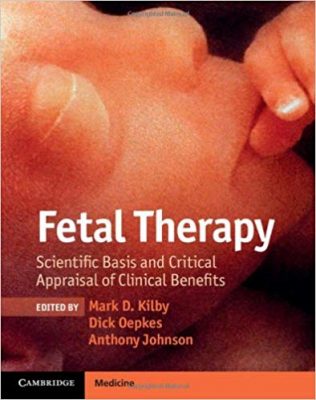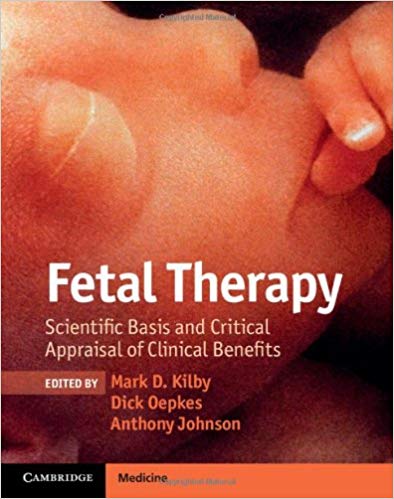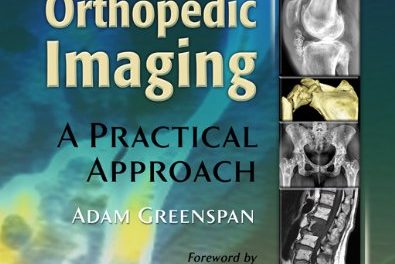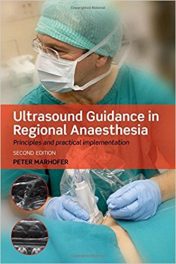 Editors: Mark D. Kilby, Dick Oepkes, and Anthony Johnson
Editors: Mark D. Kilby, Dick Oepkes, and Anthony Johnson
Publisher: Cambridge University Press – 453 pages
Book Review by: Sonu Chandiram
Fetal medicine relates to the practice of diagnosing diseases and disorders in fetuses or unborn children and treating them to mitigate complications and unwelcome outcomes after birth.
In 1963, the editors Mark D. Kilby, Dick Oepkes, and Anthony Johnson, point out, William Liley published the first example of direct fetal therapy: an intra-peritoneal blood transfusion for rhesus alloimmunization. This was before ultrasound technology was even introduced. The procedure that Liley performed would have been much safer and effective with that technology. At that time hemolytic disease of the fetus was fairly common.
Afterwards, rhesus porphylaxis was introduced and the condition that Liley treated became less frequent, just as intravascular transfusion improved. But then, it has become so rare that it is difficult to provide training and main skills, writes Dr. Charles H. Rodeck in his Foreword.
New developments in ultrasound, as well as well as in biochemistry, cell culture, genetics, and molecular biology have been useful to specialists in fetal medicine in at least two ways: for diagnosis, and for population screening and prevention of common fetal conditions.
Fetal surgery is usually complex and difficult because of the “complexity and formidable nature of some of the interventions, the relatively rare indications and opportunities for performing them, and the scarce availability of the necessary skills and facilities,” the editors point out.
Because of the above-mentioned reasons, the accumulation of knowledge and skills has been slow. The limited number of fetal medicine practitioners is also a contributing factor. As a consequence, “there is as yet, no definite treatment for genetic disease, pre- or post-natally and the understanding of the molecular basis for malformations is insufficiently advanced to design preventive strategies,” the editors write.
Ninety-two specialists in embryology, fetal-maternal medicine, human development, obstetrics and gynecology, pediatrics, stem cell biology, and related fields, from 10 countries – Australia, Belgium, Canada, France, Hong Kong, Ireland, the Netherlands, Sweden, the United Kingdom, and the United States – wrote the chapters of this book. We list them below to provide you a broad overview of its coverage:
- Section I – General Principles
- The rationale for fetal therapy
- Insights into pathogenesis of adult cardiovascular disease from fetal animal studies
- Human embryology: molecular mechanisms of embryonic disease
- Ethics of fetal therapy
- Fetal therapy choices: about risks, emotions, and the doctor’s role in the decision-making process
- Section II – Fetal disease: pathogenesis and principles
- Red cell alloimmunization
- Fetal and neonatal alloimmune thrombocytopenia
- Fetal dysrhythmias : the effects of antiarrhythmic therapy on the immature heart
- Fetal dysrhythmias: clinical management
- Structural heart disease: embryology
- Structural heart disease: genetic influences
- Structural heart disease: fetal cardiac interventions
- Manipulation of amniotic fluid volume: homeostasis of fluid in the amniotic cavity
- Manipulation of amniotic fluid volume: oligohydramnios and polyhydramnios
- Twin-to-twin transfusion syndrome: scientific basis
- Twin-to-twin transfusion syndrome: placental circulation
- Twin-to-twin transfusion syndrome: cardiovascular manifestations
- Twin-to-twin transfusion syndrome: treatment by fetoscopic laser ablation
- Twin-to-twin transfusion syndrome: management of stage 1 disease
- Twin-reversed arterial perfusion (TRAP) sequence: pathophysiology
- Twin-reversed arterial perfusion (TRAP) sequence: in-utero treatment
- Fetal infections: immune responses to congenital infections
- Fetal infections: clinical management
- Fetal urinary tract obstruction: pathophysiology
- Fetal urinary tract obstruction: prenatal assessment and prognosis
- Fetal urinary tract obstruction: fetal cytoscopy
- Fetal urinary tract obstruction: in-utero intervention
- Fetal lung growth, development, and lung fluid: physiology and pathophysiology
- Fetal lung growth, development, and lung fluid: clinical management of pleural effusion, and pulmonary pathology
- Neural tube defects: pathophysiology and prevention
- Neural tube defects: clinical management
- Fetal tumors: pathophysiology
- Fetal tumors: clinical management
- Intrauterine growth restriction: placental basis and implications for clinical practice
- Intrauterine growth restriction: differential diagnosis and management
- Congenital diaphragmatic hernia: pathophysiology
- Congenital diaphragmatic hernia: clinical antenatal management
- Fetal stem cell transplantation: stem cell biology basics
- Fetal stem cell transplantation: clinical potential
- Fetal stem cell transplantation: fetal tissue engineering
- Gene therapy: physiological principles and clinical potential
- The future: fetal therapy and translational studies: global alignment, coordination, and collaboration in perinatal research: The Global Obstetrics Network (GONEt) initiative
This book is a very substantial and important contribution to the relatively small but growing field of fetal-maternal medicine by the editors and numerous worldwide authors of its chapters, and should serve those who are seeking to venture into this specialization, as well as established practitioners seeking to advance their information, insight, knowledge, skills, and understanding.
Editors:
Mark D. Kilby is Professor of Fetal Medicine at the School of Clinical and Experimental Medicine in the College of Medical and Dental Sciences at the University of Birmingham Fetal Medicine Center, and is with Birmingham Women’s Foundation Trust in Egbaston, Birmingham, in the United Kingdom.
Dick Oepkes is Professor of Obstetrics and Fetal Therapy at Leiden University Medical Center in Leiden in the Netherlands,
Anthony Johnson is Professor of Maternal-Fetal Medicine at the University of Texas Health Science Center in Houston, Texas, USA.







